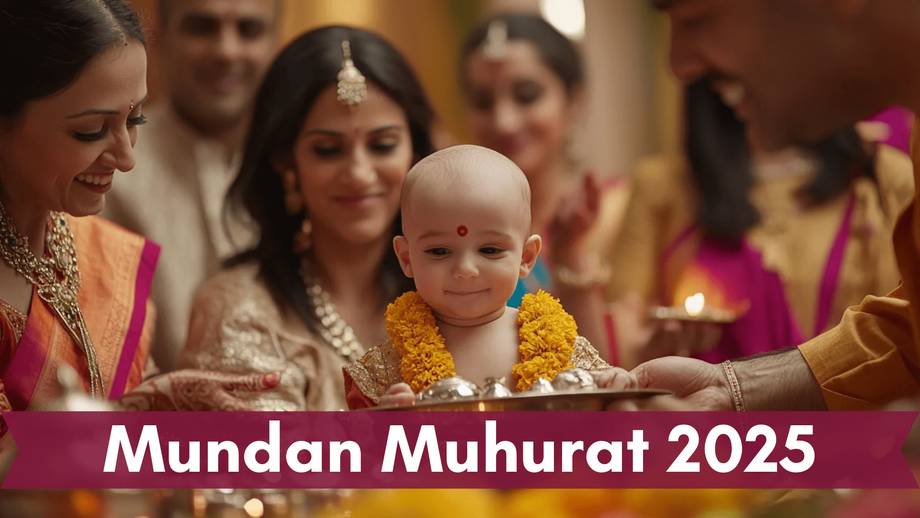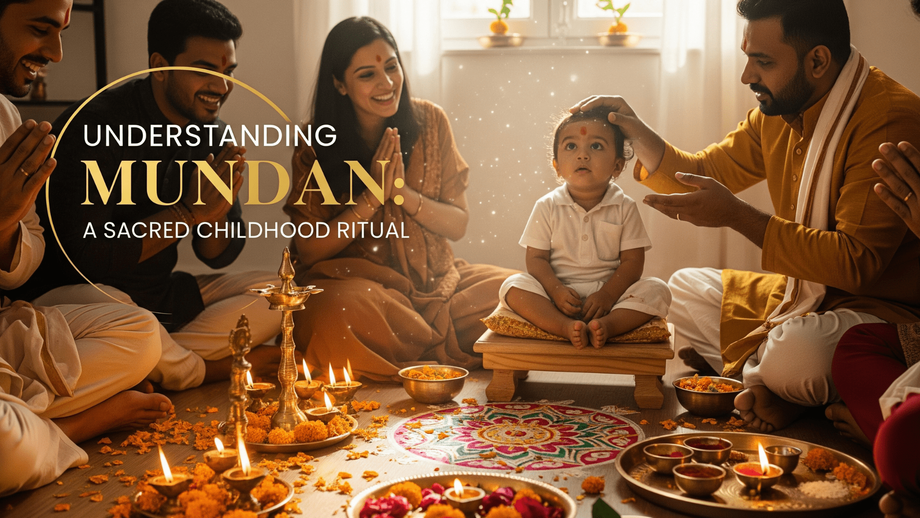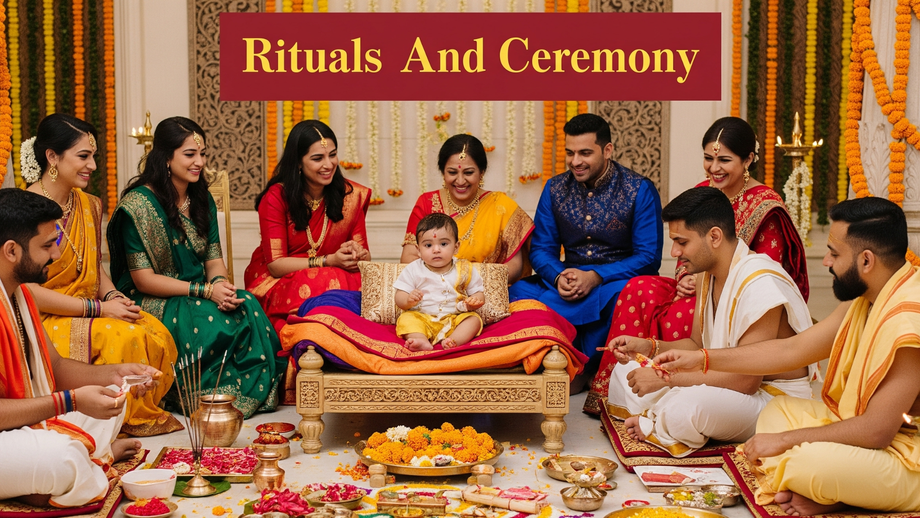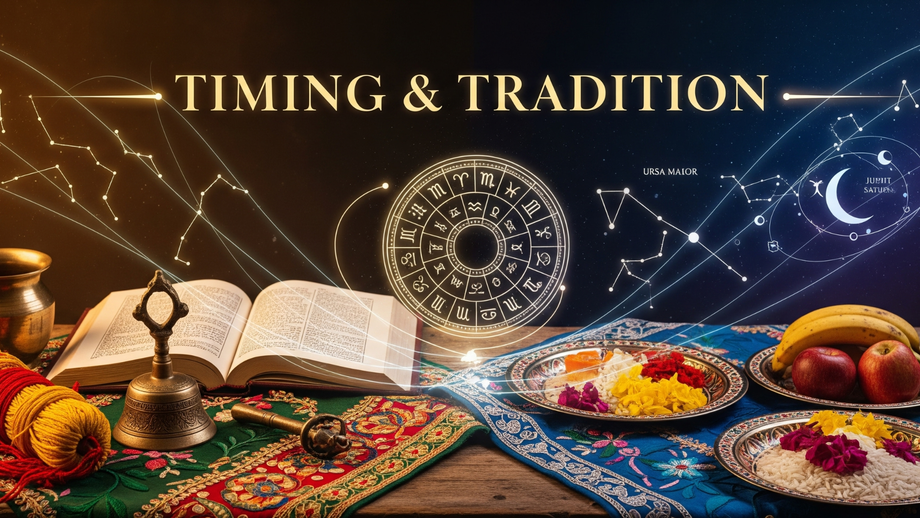Can Timing Change Everything? Exploring Mundan Muhurat 2025

Have you ever paused to consider why a child’s first haircut is considered such a pivotal moment in Indian culture? Beyond the religious rituals, the Mundan ceremony symbolizes a blend of spirituality, family bonding, and tradition. If you are preparing for Mundan Muhurat 2025, understanding its significance, timing, and modern interpretations can help make the occasion meaningful, memorable, and stress-free.
Understanding Mundan: More Than a Haircut
Mundan, also known as Chudakarana, is a Hindu ritual where a child’s first hair is shaved. On the surface, it may seem like a simple grooming activity, but the practice is layered with symbolism. Traditionally, it is believed to remove negative energies from past lives, promote healthy hair growth, and provide divine protection. Beyond spiritual interpretations, the ceremony serves as a psychological anchor for children, giving them their first structured experience of a ritual.
For families, Mundan also represents continuity, a way to connect the child with centuries of cultural tradition. It is a moment that allows families to celebrate growth, health, and blessings, making it much more than a simple haircut.
Choosing the Right Mundan Muhurat
Astrological guidance plays a key role in determining the right timing for Mundan. Experts consult the Hindu panchang to select a day that aligns with favourable planetary positions. In 2025, certain dates have been marked as auspicious for performing the ceremony, and just like how Daily Rashifal guides individuals in making everyday decisions, these chosen dates are believed to bring blessings, harmony, and positive energy to the ritual. However, modern parents often blend traditional astrology with practical considerations, taking into account family schedules, seasonal factors, and overall convenience.
The Little one’s age is another factor. Traditionally, children undergo Mundan between the ages of one and three, although some families may wait slightly longer based on specific beliefs or health considerations. By blending astrology with common sense, parents can plan a ceremony that respects tradition while fitting into modern schedules.
Rituals and Ceremony
The rituals of Mundan vary across regions but generally follow a core sequence. The child is first bathed and dressed in clean clothes, often in bright colours. A priest or elder prepares the ritual space, adorning it with flowers and sacred symbols.
During the shaving, mantras are recited, and family members often participate in small ways, such as sprinkling petals or offering blessings. After the haircut, the hair is sometimes kept as a keepsake, honouring the child’s milestone. The ceremony typically concludes with prayers, blessings, and a simple celebration involving close family. While some families prefer grand gatherings, modern interpretations lean towards smaller, intimate, and meaningful observances.
Modern Adaptations of Mundan
Mundan has evolved to fit contemporary lifestyles without losing its spiritual essence. Parents today often simplify rituals, focusing on the symbolic aspects rather than elaborate procedures. Health and safety are prioritized, with child-friendly grooming tools and gentle shaving methods. Some families also document the event through photography or video, creating lasting memories, while others even combine traditional wisdom like palmistry or astrology to add deeper meaning to the ceremony.
Interactive rituals, including participation from siblings, sharing heartfelt family blessings, or performing meaningful symbolic gestures, are becoming increasingly common in modern ceremonies. Such practices make the ceremony emotionally engaging while keeping the child comfortable and at ease. By embracing creativity and mindfulness, modern families turn the Mundan ceremony into a meaningful experience that seamlessly blends cherished traditions with personal values.
Why Timing Matters: Tradition Meets Psychology
Astrological timing is a traditional consideration, but it also has psychological benefits. Choosing an auspicious day instills a sense of order and optimism for the family, while observing a ritual calmly and thoughtfully reinforces emotional security for the child. Even if the spiritual belief is secondary, timing helps structure the event, providing both parents and child with a shared sense of purpose and significance.
Moreover, planning the ceremony carefully strengthens family bonds. Relatives participating in rituals, sharing blessings, and celebrating together create an environment of love, support, and continuity. This makes Mundan more than just a religious practice; it becomes a meaningful family memory that lasts a lifetime.
You can also watch: Kya Kundali Ka Rahasya Aapke Bhavishya Ka Faisla Karta Hai? Janiye Sahi Jawab!
The Final Thought
Mundan Muhurat 2025 is more than just a first haircut; it’s a celebration of life, growth, and family connection. By combining tradition, modern insights, and thoughtful planning, parents can create a ritual that is meaningful, memorable, and joyful. Whether you follow astrology strictly or focus on the emotional and cultural aspects, the ceremony offers an opportunity to honour your child, strengthen family bonds, and create memories that will last a lifetime.
FAQs About Mundan Sarkar Muhurat 2025
At what age should the Mundan be performed?
Typically between 1 and 3 years old, although some families may wait longer depending on beliefs or health.
Is astrology mandatory for a Mundan?
No. While traditional astrology is often followed, many families prioritize the ritual’s emotional and cultural value over strict planetary rules.
Can Mundan be performed at home?
Yes. Home ceremonies are common, providing a comfortable and familiar setting for the child and family.
- Art
- Causes
- Crafts
- Dance
- Drinks
- Film
- Fitness
- Food
- Spellen
- Gardening
- Health
- Home
- Literature
- Music
- Networking
- Other
- Party
- Religion
- Shopping
- Sports
- Theater
- Wellness







